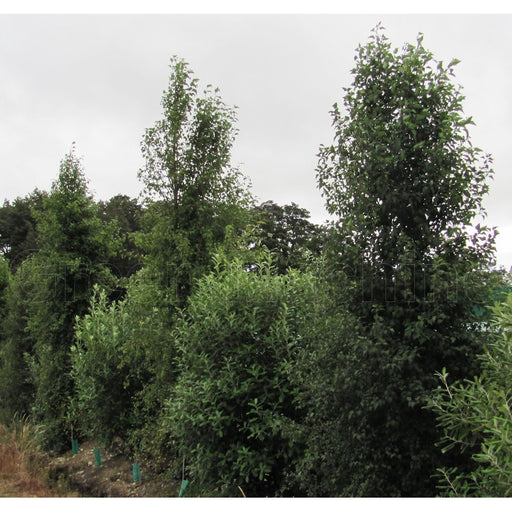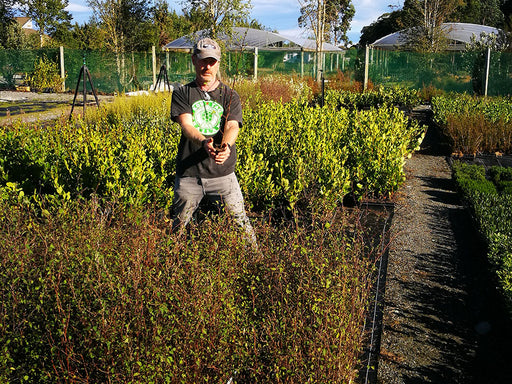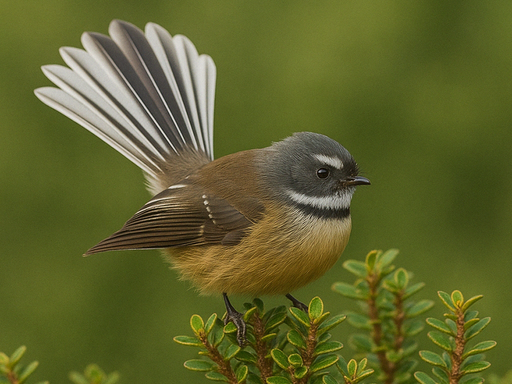
Podocarpus Totara
Podocarpus totara (Podocarpus totara)
Common Names: Totara, New Zealand Totara
Family: Podocarpaceae
Origin: Endemic to New Zealand
Plant Type: Evergreen coniferous tree
Overview:
Podocarpus totara is a revered native New Zealand tree known for its fine, dark green needle-like foliage, upright form, and exceptional durability. Traditionally valued for its strong timber and cultural significance to the Māori people, this slow-growing evergreen is equally suited to contemporary landscapes, native reforestation projects, or formal gardens where structure and longevity are prized.
Key Features:
-
Foliage: Dense, linear, dark green leaves with a fine, clean texture.
-
Flowers/Fruit: Inconspicuous reproductive structures; produces small red fleshy fruit (arils) that attract birds.
-
Form & Habit: Upright and columnar when young; broadens with age into a pyramidal or rounded form.
-
Growth Rate: Slow to moderate, depending on climate and soil quality.
-
Cultural or Ecological Value: Totara is a taonga (treasured) species in Māori culture and plays an important role in native ecosystems.
Mature Size:
| Attribute | Size |
|---|---|
| Height | 20–30 meters in native habitat; 4–10 meters in cultivation |
| Spread | 3–6 meters |
| Form | Pyramidal to broadly rounded when mature |
Ideal Growing Conditions:
| Requirement | Detail |
|---|---|
| Light | Full sun to partial shade |
| Water | Moderate; drought-tolerant once established |
| Soil | Well-drained; tolerates clay, loam, and sandy soils |
| pH Range | Neutral to slightly acidic |
| Frost Tolerance | Hardy to around -8°C once established |
Landscaping and Garden Uses:
-
Screening or privacy hedging with regular pruning
-
Specimen tree for parks, estates, or large gardens
-
Suitable for formal gardens, topiary, or clipped hedges
-
Native revegetation and ecological restoration projects
-
Urban or rural planting due to wind resistance and pollution tolerance
Care and Maintenance:
-
Pruning: Responds well to shaping and can be kept as a dense hedge or sculpted form. Best pruned in late winter or early spring.
-
Watering: Regular watering while young; reduce once established.
-
Feeding: Benefits from a balanced slow-release fertilizer in spring.
-
Pests and Diseases: Very low susceptibility; generally disease-free.
-
Additional Tips: Mulch around base to retain moisture and suppress weeds, especially in early years.
Fun Fact or Botanical Insight:
Totara wood was traditionally used by Māori to carve waka (canoes), building posts, and sacred items due to its remarkable strength, resistance to decay, and workability. Some living specimens are believed to be over 1,000 years old.
Why Choose Podocarpus totara?
With its timeless form, exceptional longevity, and deep cultural roots, Podocarpus totara is an outstanding choice for those seeking a low-maintenance, high-impact tree. Whether planted as a stately feature or an elegant screen, Totara brings heritage, structure, and resilience to any landscape.
Pot Size:
These are our large size in 9cm square pots.
Pot Size:
Standard Pot = 7cm Square
Large Pot = 9cm Square
Extra Large Pot = 1.5L Round
Use this guide to see how many plants of your selected pot size fit into a half or full carton.
Standard Pot = 25 plants per Carton
Large Pot= 10 plants per Carton
Extra Large Pot = 5 plants per Carton
Urban- $16.55 per Carton Rural- $23.85 per Carton
Standard Pot = 50 plants per Carton
Large Pot= 25 plants per Carton
Extra Large Pot = 10 plants per Carton
Urban- $16.55 per Carton Rural- $23.85 per Carton
Product Size:
The photo next to the ruler shows an example of the plant for sale (cm's) to give an indication of the size. Please note that the photo is for reference only; the size and appearance of the plant may vary.
Please Note:
Shipping charge applies. Available for immediate dispatch only, while stocks last.












